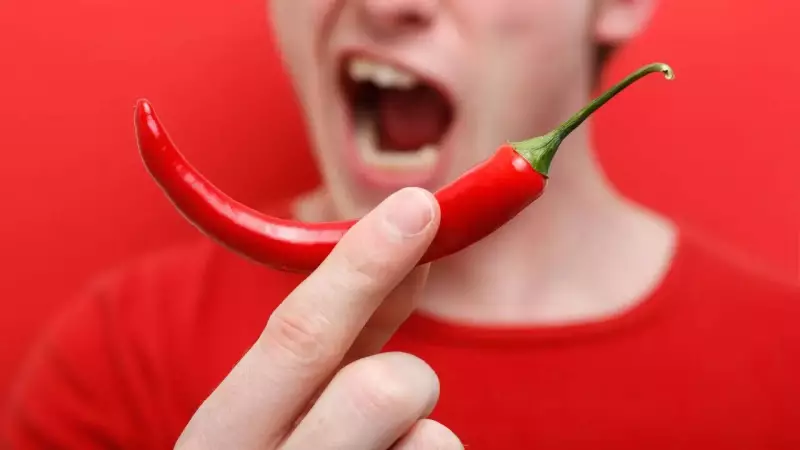
In the grand theater of human eating habits, spicy food stands out as one of our most peculiar performances. While nature designed chili peppers as clear warning signals with their vibrant colors and burning sensation, humans looked at these natural "do not touch" signs and saw an invitation instead.
The Chemistry of Pain and Pleasure
Contrary to popular belief, the experience of spice isn't actually a taste at all. The burning sensation comes from capsaicin, the chemical compound found in chili peppers that doesn't interact with your taste buds but instead targets your pain receptors. These are the same receptors that normally alert you to actual physical burning or heat damage.
When you eat spicy food, your nervous system interprets this chemical signal as a genuine emergency. Your body responds with classic distress signals: eyes water, nose runs, and sweat pours from your pores. It's your body's full-scale emergency response to what it perceives as a threat, stopping just short of complete evacuation.
Yet, in the midst of this physiological panic, humans have the remarkable tendency to say: "This is wonderful. Let me have more."
How Our Brain Rewires Itself
The secret to this seemingly irrational behavior lies in neuroplasticity—the brain's ability to rewire itself through experience. The first encounter with significant spice is typically shocking: a loud, clear "no" from your nervous system. But with repeated exposure, something fascinating happens.
Your brain learns that the chili won't actually harm you, much like it learns that a rollercoaster won't throw you into space or that a horror movie monster won't climb out of the screen. As the perceived threat diminishes, it creates space for pleasure to emerge. Scientists call this phenomenon "benign masochism"—the enjoyment of safe suffering.
Over time, the pain receptors responsible for detecting heat become less reactive. The brain transitions from screaming in alarm to quietly smirking in satisfaction. What began as pure pain transforms into a unique form of exhilaration—the quiet pride of conquering something that once defeated you.
The Genetic and Social Dimensions
Not everyone experiences spice the same way, thanks to the genetic lottery. Some people's receptors activate easily while others barely register capsaicin's presence. This biological variation explains why two people eating the same fiery dish can have completely different experiences—one calmly enjoying their meal while the other feels like they're negotiating with divine powers.
Beyond the chemistry and genetics, spice consumption involves significant social performance. Nobody eats extremely hot food quietly. Spicy food becomes a shared ritual—a test of composure, an opportunity for boasting, and a way to demonstrate one's ability to walk the fine line between pain and pleasure with dignity. People don't just consume spicy dishes; they perform their tolerance of them.
When the heat becomes overwhelming, people have discovered effective countermeasures. While water proves useless against capsaicin (which is oil-soluble), dairy products like milk and yogurt work miracles. Mint ice cream can serve as a diplomatic peace treaty between you and your overwhelmed pain receptors.
The Ultimate Appeal of Spicy Food
So why do we voluntarily subject ourselves to this experience? The reasons are multifaceted and deeply human. Spicy food lets us experience danger without real consequences. It transforms pain into entertainment and provides a brief, intense surge of aliveness that ordinary meals can't match.
Most importantly, spicy food challenges not just our tongues but our egos. Each encounter offers a small victory, a demonstration of our ability to handle the heat. And nothing proves more addictive than that sense of personal triumph, served one spicy bite at a time.





